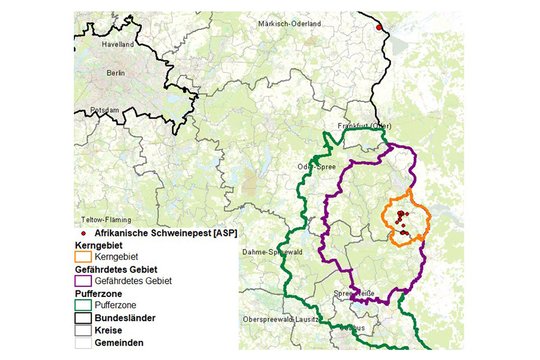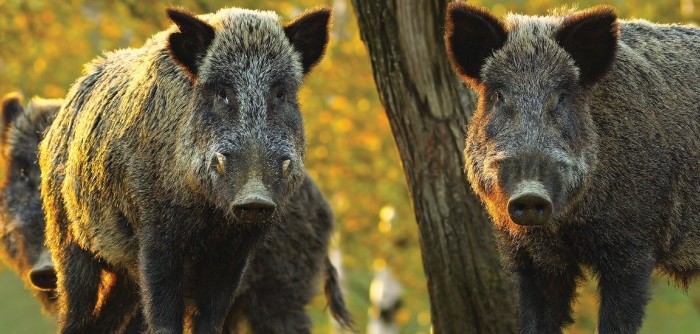African swine fever (ASF) has probably been in Germany since July, the Friedrich Loeffler Institute (FLI) has revealed, as a second distinct outbreak has emerged.
The FLI officially confirmed six more cases in wild boar on Thursday taking the total number of confirmed outbreaks in Brandenburg to 46.

The latest cases were all found within the original core area, but on Wednesday, the FLI confirmed a case in a young boar near the German-Polish border at Bleyen, about 60 km from the previously affected districts (see map, above – source: FLI).
The animal was killed by a hunter – it had appeared to be healthy but the hunter noticed and reported changes in the organs typical of ASF-infection.
The case is not thought to be directly linked to the original districts. According to the FLI’s preliminary assessment, it is likely to be a new introduction of ASF from the affected regions in western Poland.
“Thus there are two outbreaks in Brandenburg and the competent authorities are taking the appropriate measures (buffer zone, sensitive area, core area),” the FLI said.
Search continues
Meanwhile, the intensive search for fallen game continues in the ‘endangered area’, including the use of drones and human chains, Brandenburg’s State Secretary for Consumers, Anna Heyer-Stuffer said.
Among the carcases found and sampled, there were four skeletons without tissue in the hotspot Dorchetal area in the south west of Neuzelle (Oder-Spree), German pig organisation ISN reports.
As part of the first epidemiological outbreak investigations, the FLI said last week that it is estimated that these four carcases must have been around for eight to 10 weeks before they were discovered. It can therefore be assumed that the epidemic was introduced in the first half of July.
These research results were presented and discussed at the meeting of the state crisis team on September 25 in Potsdam.
Control measures
The ASF state crisis centre in Potsdam, working with local teams, is currently preparing to establish a so-called white zone around the first core area of Sembten Neuzelle, ISN reports. This will form a strip at least 5km deep around the core area with an area of more than 200 sq.km. This zone will be secured with solid, wild boar-proof fences.
The preparations for building the fence as nearly completed. “As soon as this white zone is secured with solid fences, the number of wild boars should be greatly reduced,” ISN said.




